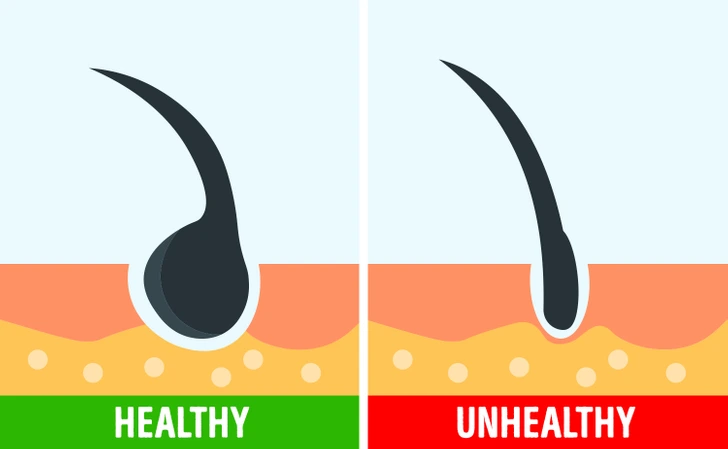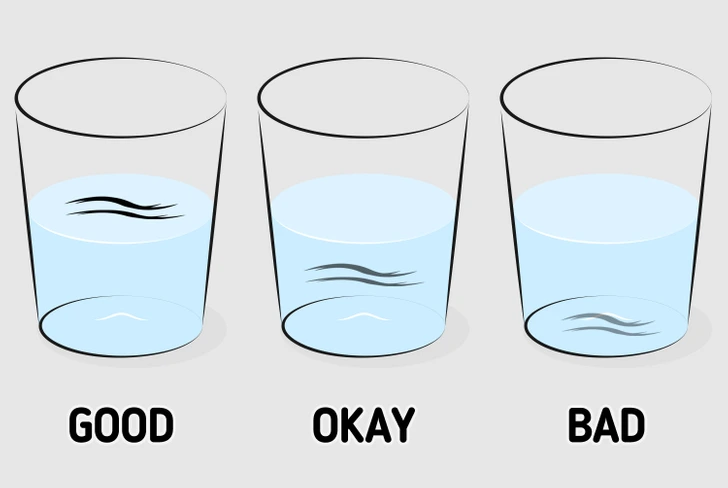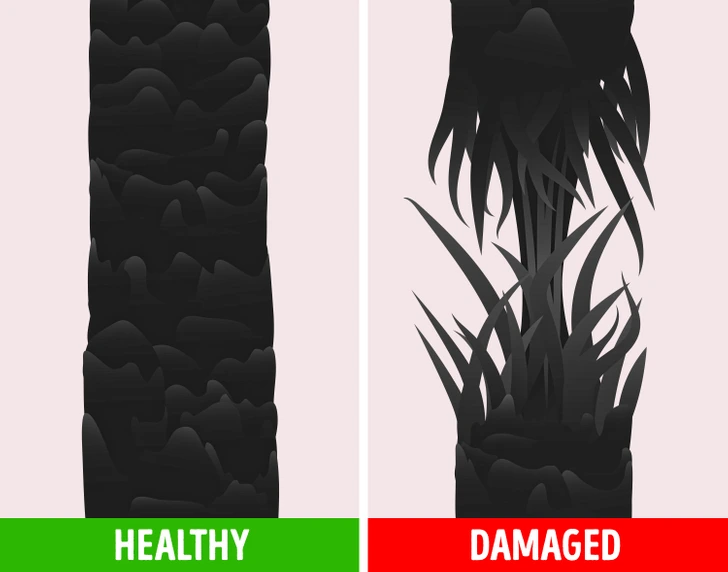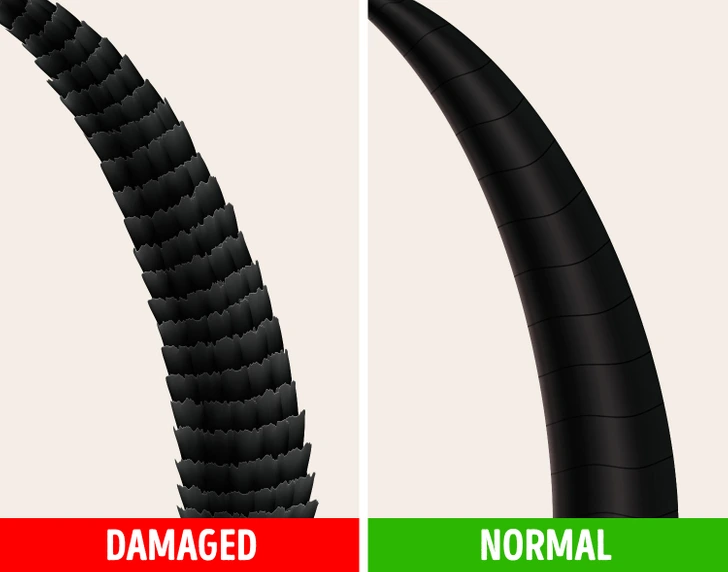Our hair can handle a certain amount of stress, with the ability to stretch up to 30% longer when wet and withstand up to 3.5 ounces of tension. However, only healthy hair exhibits these properties—damaged strands are more prone to breakage. Determining the health of your hair may not be straightforward at first glance, but there are several practical tests you can perform to assess its condition and take appropriate action to improve it.
Here’s how you can evaluate the health of your hair:
1. Follicle Test

To assess overall hair health and potential hair loss, start with the hair roots:
– Pluck a strand of hair close to the scalp to ensure the root is attached.
– Examine the root: a healthy root will be bulb-shaped. If the root is small or lacks a bulb, your hair might be weak and in need of care.
Tips to Prevent Hair Loss:
– Follow a balanced diet like the Mediterranean diet, which is linked to reduced risk of hair loss. This diet includes vegetables, fruits, nuts, fish, and whole grains while avoiding red meat, sugary beverages, and processed foods.
– Avoid tight hairstyles, especially while sleeping, as they can contribute to hair loss.
– Consider taking vitamins and minerals that support hair health.
2. Sink Test

This test measures hair porosity—how well your hair absorbs moisture:
– Shampoo your hair to ensure it’s clean.
– Pluck a strand of hair and drop it into a glass of water. Healthy hair will float, slightly porous hair will sink a little, and highly porous or damaged hair will sink quickly.
Tips for Managing High Porosity Hair:
– Use hair butters and oils to seal in moisture and keep hair hydrated.
– Apply conditioner after each wash.
– Use apple cider vinegar or aloe vera to help balance hair’s pH.
3. Tug Test

This test evaluates hair elasticity:
– Gently pull a strand of hair from both ends. Healthy hair will stretch and bounce back without breaking. Hair that breaks easily may be weak.
Tips to Improve Hair Elasticity:
– Air-dry your hair instead of using heat to prevent damage.
– Massage your hair with jojoba oil to keep it moisturized and prevent breakage. Jojoba oil also helps with dandruff and contains vitamins beneficial for hair health.
– Apply honey as a natural conditioner to retain moisture, add shine, and support hair growth.
4. Porosity Test

This test assesses the condition of the hair cuticle:
– Clamp a strand of hair between your fingers and slide it from the top to the root. If it feels rough and uneven, your hair may be damaged. Smooth hair indicates better health.
Tips for Treating Damaged Hair:
– Consider a keratin treatment to smooth hair and reduce frizz.
– Limit the use of dyes, curling irons, and blow dryers.
– Try a rice water rinse to protect hair and maintain color longer.
Feel free to share your own hair care tips and experiences in the comments!


